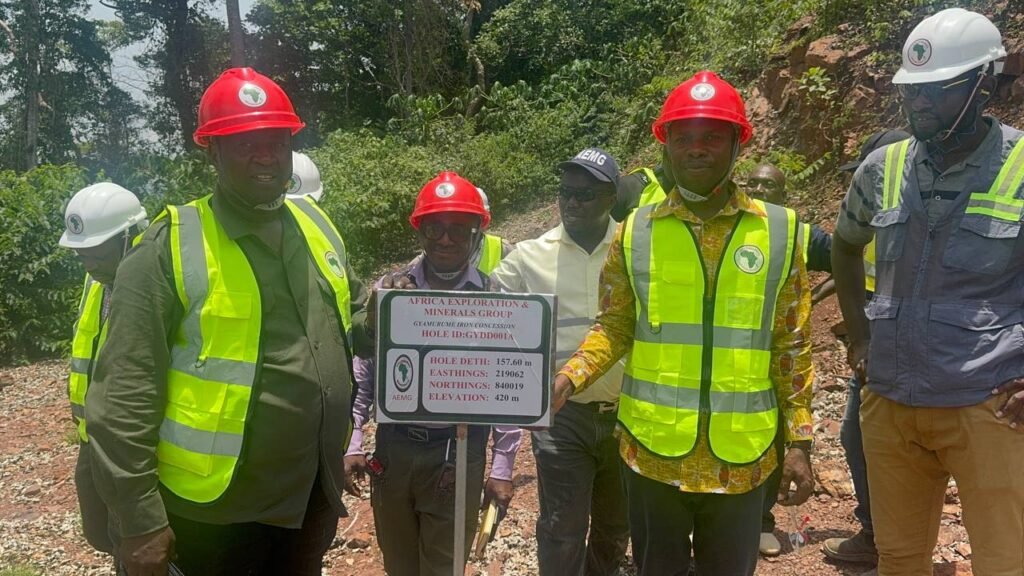Exploration for iron ore in Ghana’s Oti Area is displaying robust potential, with early information suggesting that the deposits might be commercially viable and probably among the many finest in West Africa.
This growth may considerably bolster Ghana’s mineral useful resource base and lay the muse for a home iron and metal business.
Pushed by rising world demand forecast to rise by 3% yearly because of development in development and manufacturing the seek for iron ore is being spearheaded by the Ghana Built-in Iron and Metal Improvement Company (GIISDEC) and its technical associate, Africa Exploration and Minerals Group (AEMG). The exploration has centered on the Gyamurume space inside the Kadjebi District since 2020.
Preliminary findings are encouraging. GIISDEC officers report discovering oxidised iron ore with iron oxide concentrations as excessive as 82%, translating to about 57% iron. On common, samples include 67% iron oxide or roughly 47% iron content material.
“These are simply preliminary figures, however the indicators are very promising,” mentioned William Okofu Darteh, Chief Govt Officer of GIISDEC.
“Whereas we nonetheless want laboratory affirmation, the standard seems to be very aggressive even higher than some deposits being mined elsewhere in Africa”, he identified.
These promising outcomes have attracted the curiosity of a number of potential traders, however GIISDEC stays centered on finishing its information assortment earlier than getting into critical negotiations. “We aren’t dashing into something. Accuracy and completeness are our priorities,” Mr. Darteh added.
To this point, the exploration course of has included distant sensing and geophysical surveys. From 54 initially recognized targets, AEMG narrowed down 11 key drilling zones. Drilling started in mid-2024, with eight of the deliberate 30 drill holes already accomplished. The complete drilling program spans 15 drill traces, protecting roughly 2,500 metres. Completion is anticipated by June 2025, adopted by an in depth useful resource estimate by September 2025.
Franklin Mace, Chief Geologist at AEMG, famous that the drilling has constantly intersected banded iron formations averaging 30 metres in width. Apparently, serpentinite rocks potential indicators of nickel have additionally been discovered, including sudden potential worth to the mission.
Geological mapping has up to now recognized 42,000 sq. metres of totally oxidised ironstone and 36,000 sq. metres of partially oxidised deposits, extending over an 8-kilometre stretch that dips steeply eastward. Fault zones within the rock formations could enhance accessibility to the ore.
Over 100 rock samples examined by Intertek Laboratory and the College of Ghana verify excessive iron content material. Nevertheless, drilling is important to confirm the depth and continuity of the deposits.
“It’s seen on the floor, however we have to verify what lies beneath,” defined Prof. Frank Nyame, a College of Ghana lecturer and technical advisor to the mission.
As soon as the useful resource estimate is full, GIISDEC plans to make use of the info to draw funding and set up a full iron and metal manufacturing worth chain. This initiative may diversify Ghana’s financial system, lowering reliance on gold and cocoa exports.
“This might be a transformative mission,” Darteh emphasised. “By the tip of September 2025, we should always know the complete potential, after which we are able to take the subsequent huge steps.”
Ghana presently holds about 1.7 billion tonnes of iron ore reserves, together with the Shieni deposit (1.3 billion tonnes at 33.8% Fe) and the Opon-Mansi deposit (147 million tonnes at 52.5% Fe). A US$600 million mining operation at Shieni is scheduled to start in late 2025, with the objective of lowering annual metal imports valued at round US$900 million. The broader nationwide plan is to start out home processing of iron ore by 2027, specializing in worth addition and job creation.
Group engagement can also be a key a part of the mission.
Osaberima Osei-Bonsu V, Paramount Chief of the Asato Conventional Space, expressed help, noting the distinction between this structured effort and unlawful small-scale mining.
“We’re hopeful that our individuals will profit by employment and different alternatives,” he mentioned.
Though the terrain presents logistical challenges, GIISDEC is urgent forward with help from companions just like the Ghana Geological Survey Authority, consulting agency SRK, and native contractor BobJosh Drilling Firm, which is supplying moveable rigs suited to troublesome circumstances.
“We acknowledge the obstacles particularly with entry and transport however we’re addressing them as they come up,” Mr. Darteh concluded.
If profitable, this initiative may develop into a cornerstone of Ghana’s future industrial panorama.
DISCLAIMER: The Views, Feedback, Opinions, Contributions and Statements made by Readers and Contributors on this platform don’t essentially characterize the views or coverage of Multimedia Group Restricted.
Source link
